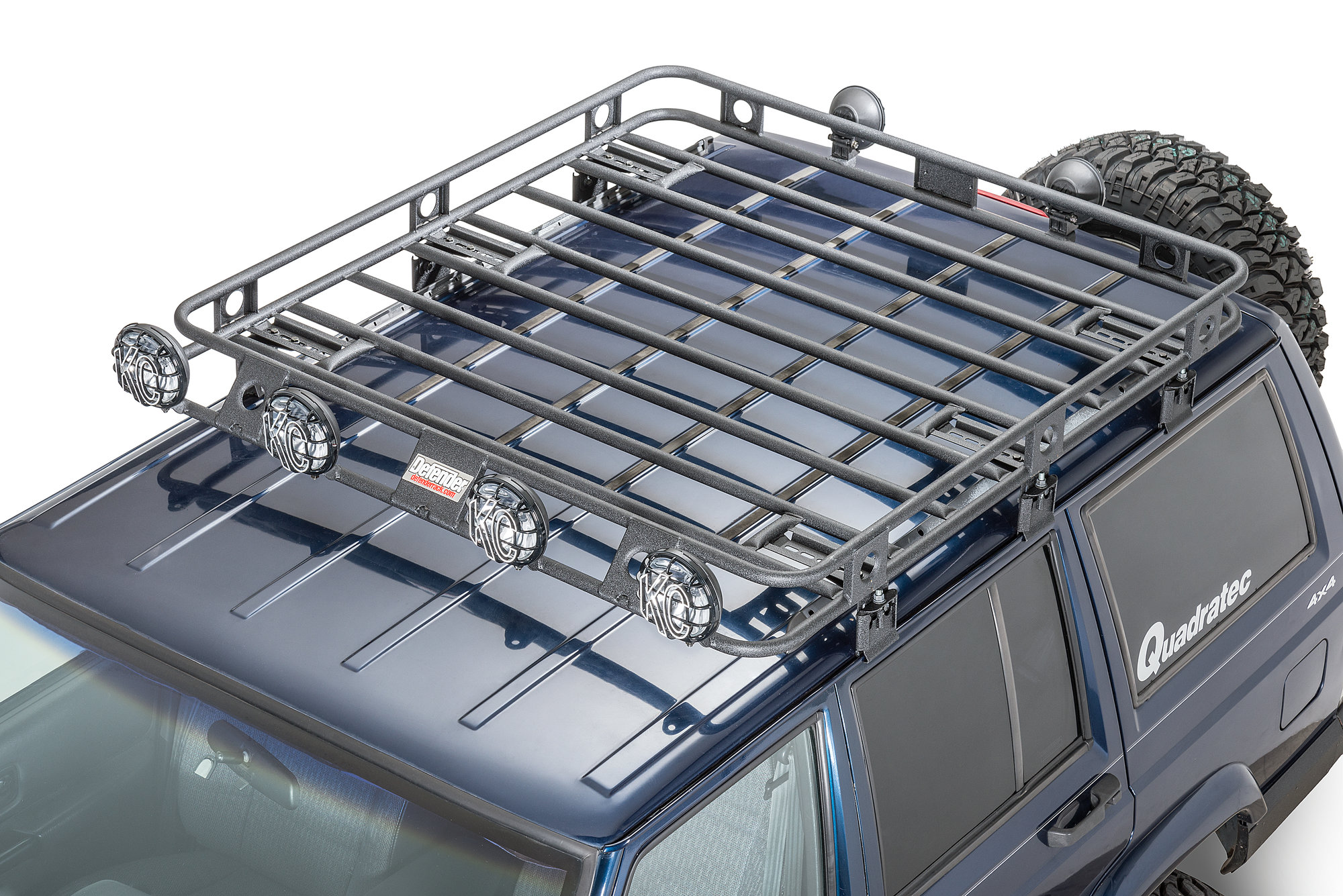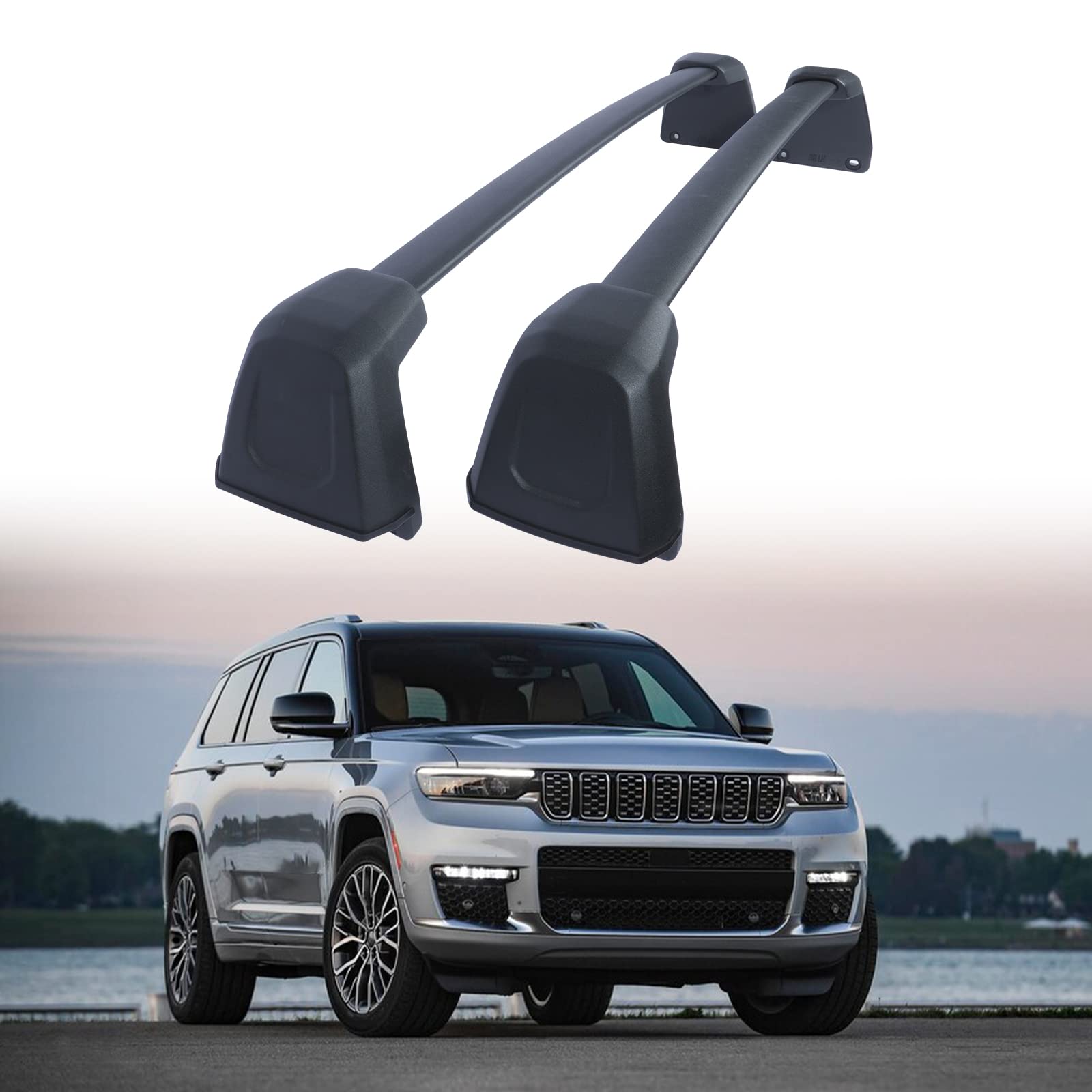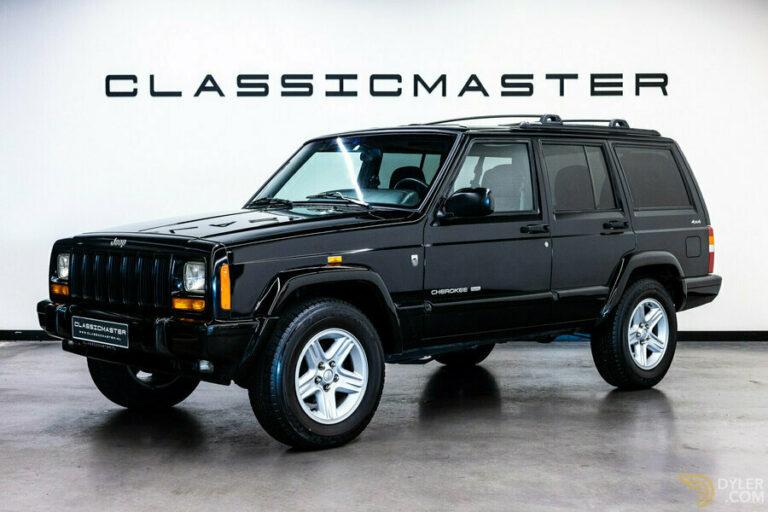Jeep Cherokee Roof Rack: Unlocking Your Adventure Potential
Jeep Cherokee Roof Rack: Unlocking Your Adventure Potential jeeps.truckstrend.com
The Jeep Cherokee, a name synonymous with rugged capability and adventurous spirit, has long been a favorite for those who crave exploration beyond the paved path. While its interior offers ample space for daily commutes and family trips, true adventurers often find themselves yearning for more cargo capacity – especially when hauling gear for camping, biking, kayaking, or skiing. This is precisely where a Jeep Cherokee Roof Rack becomes an indispensable accessory, transforming your vehicle from a capable SUV into an ultimate adventure rig. A roof rack is essentially a set of bars or a platform mounted to the roof of your vehicle, designed to carry oversized items or additional luggage that simply won’t fit inside. It’s not just about space; it’s about expanding possibilities and enhancing the very essence of the "Go Anywhere, Do Anything" philosophy that defines the Jeep brand.
Why a Roof Rack is Essential for Your Jeep Cherokee
Jeep Cherokee Roof Rack: Unlocking Your Adventure Potential
Investing in a roof rack for your Jeep Cherokee goes far beyond merely adding storage space. It’s about unlocking the full potential of your vehicle and your outdoor pursuits.
- Expanded Cargo Capacity: The most obvious benefit. A roof rack allows you to transport items that are too long, bulky, or dirty to fit inside your Cherokee, such as lumber, surfboards, skis, or camping tents.
- Hauling Oversized Gear: Whether you’re an avid cyclist, kayaker, or winter sports enthusiast, a roof rack provides the secure platform needed to attach specialized carriers for bikes, kayaks, canoes, stand-up paddleboards, or skis and snowboards.
- Free Up Interior Space: By moving gear to the roof, you free up valuable interior space for passengers, pets, or more accessible smaller items, making long trips more comfortable and less cluttered.
- Enhanced Adventure Capabilities: For overlanders and campers, a robust roof rack can support rooftop tents, auxiliary lighting, recovery boards, fuel cans, and even solar panels, turning your Cherokee into a self-sufficient base camp.
- Customization and Versatility: Roof racks are highly modular. You can start with basic crossbars and add various attachments as your needs evolve, making it a versatile long-term investment.
- Protect Your Interior: Transporting muddy boots, wet gear, or sharp tools inside your vehicle can damage upholstery and carpets. A roof rack keeps these items outside, preserving your Cherokee’s interior.

Regardless of your Cherokee’s generation – be it the classic XJ, the KJ, KK, or the modern KL – a well-chosen roof rack significantly enhances its utility and prepares it for any adventure you throw its way.
Types of Jeep Cherokee Roof Racks
The market offers a variety of roof rack systems, each designed to cater to different needs and cargo types. Understanding the distinctions will help you choose the best fit for your Jeep Cherokee.
-
Crossbar Systems:
- Description: These are the foundational components of most roof rack setups, consisting of two horizontal bars that run across the width of your vehicle’s roof. They attach to factory side rails, flush rails, or directly to the roof (for bare roof applications).
- Pros: Most common, versatile, serve as a base for almost all other attachments (bike racks, kayak carriers, cargo boxes). Relatively low profile and aerodynamic.
- Cons: Limited in terms of carrying very wide or irregularly shaped items directly without additional accessories.
- Best For: General use, attaching bike/kayak/ski carriers, small cargo boxes.

-
Roof Baskets / Cargo Carriers:
- Description: These are open, basket-style containers that mount directly onto crossbars. They provide an enclosed space (either mesh or solid bottom) to hold various types of gear, often secured with cargo nets or straps.
- Pros: Excellent for containing multiple smaller items, camping gear, luggage, or dirty equipment. Easy to load and unload.
- Cons: Can be less aerodynamic than cargo boxes, leading to more wind noise and potentially higher fuel consumption. Items are exposed to elements.
- Best For: Camping gear, luggage, odd-shaped items, soft bags.
-
Cargo Boxes (Roof Boxes):
- Description: Enclosed, aerodynamic containers that attach to crossbars. They are typically made of durable plastic or fiberglass and offer weather-resistant storage.
- Pros: Excellent weather protection, enhanced security (lockable), improved aerodynamics compared to open baskets, reduces wind noise.
- Cons: Can be bulky to store when not in use, limited to specific dimensions, more expensive than baskets.
- Best For: Luggage, ski equipment, camping gear that needs weather protection.
-
Platform Racks:
- Description: A flat, robust platform that covers a significant portion of the roof, providing a versatile surface for mounting various accessories. They often have multiple attachment points.
- Pros: Extremely strong, ideal for rooftop tents, recovery gear, jerry cans, and creating a truly modular system. Distributes weight over a larger area.
- Cons: Heavier, more expensive, higher profile, can significantly impact fuel economy due to increased drag.
- Best For: Overlanding, rooftop tents, heavy-duty gear, extensive customization.
-
Specialized Carriers:
- Description: These are attachments designed for specific gear, such as bike racks (fork mount, frame mount, wheel mount), kayak/canoe carriers (j-cradles, saddles), ski/snowboard carriers, and surfboard pads.
- Pros: Securely holds specific equipment, often padded to protect gear.
- Cons: Requires a base crossbar system.
- Best For: Transporting specific sports equipment safely and securely.

Key Considerations When Choosing a Jeep Cherokee Roof Rack
Selecting the right roof rack involves more than just picking a type; several critical factors must align with your vehicle and your intended use.
-
Vehicle Compatibility (Cherokee Generation & Roof Type):
- Jeep Cherokee XJ (1984-2001): Often requires gutter mount or drilled installations, as many models didn’t come with factory rails.
- Jeep Cherokee KJ (Liberty 2002-2007) & KK (Liberty 2008-2012): Typically feature raised factory side rails, making crossbar installation straightforward.
- Jeep Cherokee KL (2014-Present): Can have flush side rails, raised side rails, or a bare roof. The mounting system for your rack MUST match your specific roof type. Ensure the rack manufacturer explicitly states compatibility with your exact year and trim.
-
Weight Capacity (Static vs. Dynamic):
- Dynamic Weight Capacity: The maximum weight the rack can safely carry while the vehicle is in motion. This is crucial for safety during driving.
- Static Weight Capacity: The maximum weight the rack can support when the vehicle is stationary (e.g., for rooftop tents). This is often significantly higher than dynamic capacity.
- Vehicle Roof Limit: Always check your Cherokee’s owner’s manual for the maximum weight its roof is designed to support. Your rack’s capacity should never exceed this. Overloading can damage the roof, suspension, and compromise handling.
-
Material and Durability:
- Aluminum: Lightweight, strong, and highly resistant to corrosion. Often preferred for its balance of strength and reduced impact on fuel economy.
- Steel: Very strong and durable, ideal for heavy-duty applications like platform racks. However, it’s heavier and more susceptible to rust if not properly coated.
- Look for powder-coated finishes for enhanced weather resistance.
-
Ease of Installation:
- Some racks are designed for quick, tool-free installation, while others may require basic tools or even professional installation (especially for bare roof drilling). Consider your DIY comfort level.
-
Noise and Fuel Economy:
- Roof racks increase aerodynamic drag, which can lead to more wind noise and a decrease in fuel efficiency. The design (aerodynamic crossbars vs. bulky baskets) and the presence of a wind fairing can significantly mitigate these effects.
-
Security:
- Many roof rack systems include locking mechanisms to secure the rack to your vehicle and to secure your cargo to the rack, preventing theft. This is particularly important for expensive gear.
-
Budget:
- Roof rack systems vary widely in price based on brand, material, type, and features. Set a budget, but remember that investing in a quality, durable rack is safer and more cost-effective in the long run.
Installation Guide: Getting Your Jeep Cherokee Roof Rack Ready
While specific installation steps vary by manufacturer and Cherokee model, here’s a general guide to get your roof rack set up:
- Read the Instructions: This is paramount. Every rack system comes with detailed instructions. Follow them meticulously.
- Unpack and Identify Components: Lay out all parts and compare them against the parts list provided in the manual to ensure nothing is missing.
- Identify Mounting Points:
- Raised Side Rails: Racks will clamp directly onto these rails.
- Flush Side Rails: Racks will typically use specific mounting points or clamp around the flush rail.
- Bare Roof: This usually involves specialized clamps that grip the door frame or sometimes requires drilling into the roof (less common for aftermarket kits).
- Assemble Crossbars (if applicable): Attach the towers/feet to the crossbars, ensuring they are oriented correctly (e.g., front bar often shorter than rear bar, or vice-versa).
- Position and Secure the Rack: Carefully place the assembled rack onto your Cherokee’s roof. Measure the distance between the front and rear crossbars (as specified by the manufacturer) to ensure proper spacing for weight distribution and accessory compatibility.
- Tighten All Fasteners: Systematically tighten all bolts and clamps according to the manufacturer’s torque specifications. Do not overtighten, as this can damage the roof or the rack components.
- Test Stability: Once installed, give the rack a good shake to ensure it’s firmly attached and there’s no wobbling.
- Add Accessories: If you’re adding a cargo box, basket, or specialized carrier, follow their respective instructions for attachment to the crossbars.
- First Drive Check: After driving a short distance (e.g., 5-10 miles), stop and re-check all fasteners to ensure they are still tight, especially after the initial installation. Vibration and road forces can sometimes cause components to settle.
If you are unsure about any step, it’s always best to consult with a professional installer or the rack manufacturer’s customer support.
Maximizing Your Jeep Cherokee Roof Rack’s Potential
Once your roof rack is installed, knowing how to use and maintain it effectively will ensure its longevity and your safety.
Loading Tips:
- Distribute Weight Evenly: Place heavier items in the center of the rack and closer to the crossbars to maintain vehicle stability.
- Secure Everything: Use high-quality tie-down straps, cargo nets, or ratchet straps. Ensure items cannot shift, slide, or fly off, especially at highway speeds. "The wiggle test" – try to wiggle the item; if it moves, it’s not secure enough.
- Check Clearances: Be mindful of your increased vehicle height, especially when entering garages, carports, or drive-thrus. Measure your vehicle’s height with the rack and cargo before heading out.
- Protect Your Gear: Use padding or foam between your gear and the rack to prevent scratches or damage to both.
- Aerodynamics: For large, flat items, consider how they will impact aerodynamics. Pointing leading edges into the wind can reduce drag and noise.
Maintenance:
- Regular Checks: Periodically inspect all bolts, straps, and mounting points for tightness and wear, especially before long trips.
- Cleaning: Wash the rack with mild soap and water, especially after exposure to road salt, mud, or extreme weather, to prevent corrosion.
- Lubrication: For moving parts or locking mechanisms, a light lubricant can ensure smooth operation.
- Seasonal Removal: If you don’t use your roof rack frequently, consider removing it during off-seasons to reduce wear and tear, minimize noise, and improve fuel economy.
Safety Tips:
- Do Not Overload: Adhere strictly to the weight limits of your roof rack and your Jeep Cherokee’s roof. Overloading can affect handling, braking, and even cause structural damage.
- Adjust Driving Style: With a roof rack and cargo, your vehicle’s center of gravity will be higher. This means increased body roll, longer braking distances, and more susceptibility to crosswinds. Drive slower, especially around corners.
- Check for Wear: Look for cracks, rust, or damage to any part of the rack or its mounting hardware. Replace damaged components immediately.
- Be Aware of Obstacles: Always be mindful of low-hanging branches, overhead signs, and garage entrances.
Price Guide for Jeep Cherokee Roof Racks
Please note that prices are approximate and can vary significantly based on the brand, materials, specific features, retailer, and any ongoing sales or promotions. This table provides a general range for common types of Jeep Cherokee roof racks.
| Roof Rack Type | Material(s) | Typical Price Range (USD) | Key Features & Notes |
|---|---|---|---|
| Basic Crossbars | Aluminum, Steel, Plastic | $150 – $400 | Foundation for most systems; mounts to existing rails or bare roof; often includes locks. |
| Aerodynamic Crossbars | Aluminum | $250 – $600 | Designed to minimize wind noise and improve fuel efficiency; often sleek profile. |
| Roof Basket / Cargo Carrier | Steel, Aluminum | $200 – $800 | Open basket for various gear; requires existing crossbars; some include fairings. |
| Enclosed Cargo Box | ABS Plastic, Fiberglass | $300 – $1200+ | Weatherproof, lockable storage; excellent for skis/snowboards; various sizes/capacities. |
| Full Platform Rack | Steel, Aluminum | $600 – $1500+ | Heavy-duty; ideal for rooftop tents, overlanding gear; high static weight capacity. |
| Bike Carrier (Single) | Steel, Aluminum | $100 – $350 | Attaches to crossbars; various mounting styles (fork, wheel, frame). |
| Kayak/Canoe Carrier | Steel, Aluminum, Rubber | $80 – $300 | J-cradles, saddles, or stackers; requires crossbars; often padded. |
| Ski/Snowboard Carrier | Aluminum, Plastic | $100 – $250 | Clamps skis/boards between rubber arms; requires crossbars; often lockable. |
Note: These prices generally do not include installation fees if you opt for professional service.
Frequently Asked Questions (FAQ) About Jeep Cherokee Roof Racks
Q1: Do all Jeep Cherokees come with roof rails?
A1: No, it depends on the specific year and trim level. Newer Jeep Cherokees (KL generation, 2014-present) often come with flush or raised side rails as an option or standard on higher trims. Older generations like the XJ might have bare roofs or factory rails. Always check your specific vehicle’s configuration before purchasing a rack.
Q2: Can I install a roof rack myself?
A2: Most aftermarket roof rack systems are designed for DIY installation and come with detailed instructions. Basic tools are usually sufficient. However, if you’re uncomfortable with the process, or if it involves drilling (rare for modern Cherokee racks), professional installation is recommended.
Q3: Will a roof rack affect my fuel economy?
A3: Yes, any item added to your vehicle’s exterior, especially on the roof, increases aerodynamic drag. This will typically lead to a slight decrease in fuel efficiency. The impact varies depending on the rack’s design (aerodynamic crossbars vs. bulky baskets) and whether you’re carrying cargo. Removing the rack when not in use can help minimize this effect.
Q4: What’s the weight limit for a Jeep Cherokee roof rack?
A4: The weight limit is determined by two factors: the maximum dynamic weight capacity of the roof rack itself, and the maximum weight your Jeep Cherokee’s roof is designed to support (check your owner’s manual). Always use the lower of these two figures as your limit. Overloading can be dangerous and cause vehicle damage.
Q5: Are roof racks noisy?
A5: Some roof racks can generate wind noise, especially at higher speeds. This is usually due to air turbulence around the crossbars or cargo. Aerodynamic bar designs (like "wing" bars) and the use of a wind fairing can significantly reduce noise. Open baskets and large cargo boxes tend to be noisier than sleek crossbars.
Q6: Can I take my car through an automatic car wash with a roof rack?
A6: It is generally not recommended to take your Jeep Cherokee through an automatic car wash with a roof rack, especially brush-style washes. The brushes can snag, damage, or even rip off parts of the rack or its accessories. Touchless car washes might be safer, but it’s still advisable to check the car wash’s height restrictions and use caution. Manual washing is always the safest option.
Conclusion
A Jeep Cherokee Roof Rack is far more than just an accessory; it’s an investment in your vehicle’s versatility and your capacity for adventure. By providing essential extra storage and the ability to transport specialized gear, it transforms your already capable Jeep into an even more formidable companion for outdoor pursuits, road trips, and everyday utility. From basic crossbars for casual hauling to robust platform racks ready for the most ambitious overlanding expeditions, there’s a roof rack solution for every Jeep Cherokee owner. By carefully considering compatibility, weight limits, material, and your specific needs, you can select the perfect system to unlock your Cherokee’s full potential. So, load up your gear, hit the road, and embrace the boundless possibilities that await when your Jeep Cherokee is equipped to truly "Go Anywhere, Do Anything."







